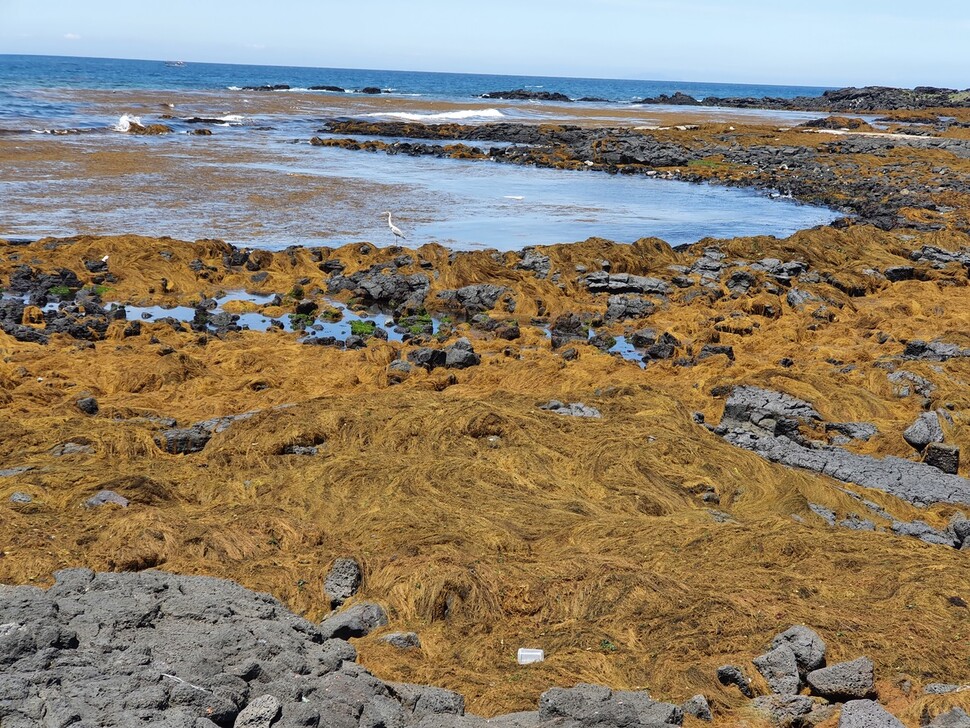Inflow more than 1 month earlier than last year
Influence on fishing vessel safety, such as screw winding
The largest collection of 4395 tons last year

Last year, the hoe saengi hat class came to the coast of Dongbok-ri, Gujwa-eup, Jeju-si.
Every year, the hoe-saeng hat class, which is rushing to the coast of Jeju, came earlier this year than usual and took an emergency to deal with it. Jeju City announced on the 18th that the hoe-saeng-i hatban found on the Jeju coast every year from the end of February to March is spreading to the western and eastern areas of Jeju after being discovered in Yongsupyo-gu and Yongdang-po-gu, Hangyeong-myeon, Jeju-si this year. As the city predicts that a large amount of hats and hats will flow into the coast of Jeju, the city decided to start collecting the hats and hats by establishing a system of monitoring and cooperation with related organizations on the sea and coast. The city collected 51 tons of hats and hats up to this day, and with the cooperation of the Fisheries and Fisheries Aviation Corps, the city started collecting the fishing port Jeju Line 1 from that day. Hoesaeng’s hat is not good in terms of aesthetics, and when it rots, it smells bad. It also affects the safe navigation of fishing vessels, such as being wound around a ship screw. The city collected 295 tons in 2016, 4363 tons in 2017, 2087 tons in 2018, and 860 tons in 2019, and last year it collected 4395 tons, the largest ever. A city official said, “We will cooperate with related organizations such as the Ministry of Maritime Affairs and Fisheries to clarify the reason for the introduction of the hoe-saeng hat classes earlier than usual, and to collect them quickly to minimize damage to fishermen. Along with this, the city is conducting a demand survey of farmers in order to supply the collected black hats as compost. In the case of last year, 4395 tons of all were supplied as compost to 14 farms. By Hur Ho-joon, staff reporter [email protected]
